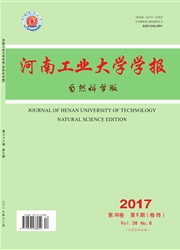

 中文摘要:
中文摘要:
基因表达编程方法(GEP)是1种较新的进化计算算法,是1种较好的数据挖掘和建模工具。因其出色的数据挖掘能力并能以数学模型表达数据关系而广受关注,但在化学领域的应用还较少。本文应用GEP方法研究环氧酶抑制剂活性和选择性的构效关系(QSAR),选择变量和建立模型,同时与BP人工神经网络(BP—ANN)和遗传算法一多元线性回归(GA—MLR)方法比较。结果发现,GEP方法的预测较好,且模型稳定。研究显示GEP在定量构效关系研究中,具有广阔的应用前景。
 英文摘要:
英文摘要:
Gene expression programming (GEP), a relatively new evolutionary algorithm, can be used as an excellent data mining and modeling technique. GEP is gaining attention due to its ability to discover the underlying data relationships and express them mathematically. GEP has been successfully applied in regression, optimization and classification, and seldom used in QSAR works. In this paper, GEP approach was applied to quantitative structure-activity relationship (QSAR) analysis of inhibiting action of eyclooxygenase (COX) inhibitor. Variable selection and model construction are implemented simultaneously by GEP. The results were compared to those obtained by the genetic algorithm and artificial neural network. The comparison demonstrated that GEP is a useful tool for QSAR analysis and the models are steady. Therefore, GEP is expected to have broad prospect in QSAR study.
 同期刊论文项目
同期刊论文项目
 同项目期刊论文
同项目期刊论文
 QSAR analysis of tyrosine kinase inhibitor using modified ant colony optimization and multiple linea
QSAR analysis of tyrosine kinase inhibitor using modified ant colony optimization and multiple linea Hybrid particle swarm optimization and tabu search approach for selecting genes for tumor classifica
Hybrid particle swarm optimization and tabu search approach for selecting genes for tumor classifica Particle swarm algorithm trained neural network for QSAR studies of inhibitors of platelet-derived g
Particle swarm algorithm trained neural network for QSAR studies of inhibitors of platelet-derived g 期刊信息
期刊信息
